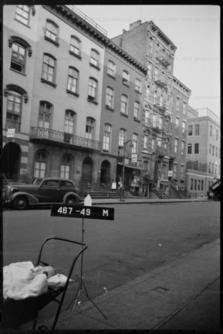
The Saturday before Christmas, 1921, near Third Avenue and 12th Street, a truck struck and killed little Amelia Laredo, who was on her way to buy a present. She was living just around the corner at the Howard Mission and Home for Little Wanderers, a Protestant-run orphanage housed in the four-story red brick-and-frame townhouse at 225 East 11th Street. On Saturdays, Jennie Hudson, the mission superintendent, would give each child a dime for the movies but that day, Amelia told her friends that she was going to use the money to buy a Christmas gift for her brother, a cripple, who was in Brooklyn Hospital. More →








